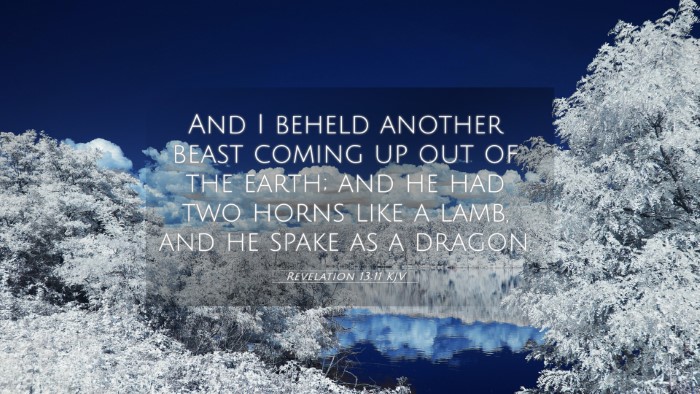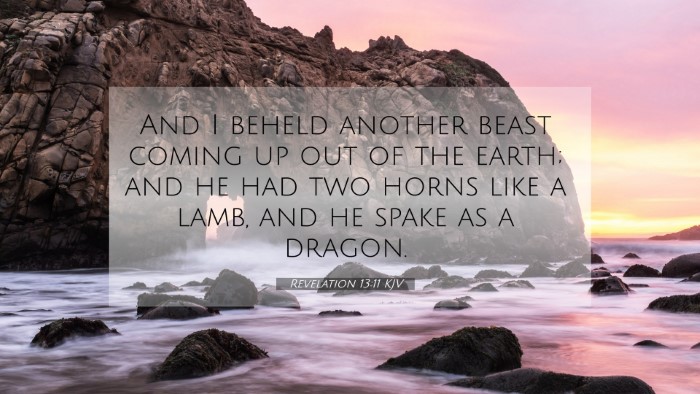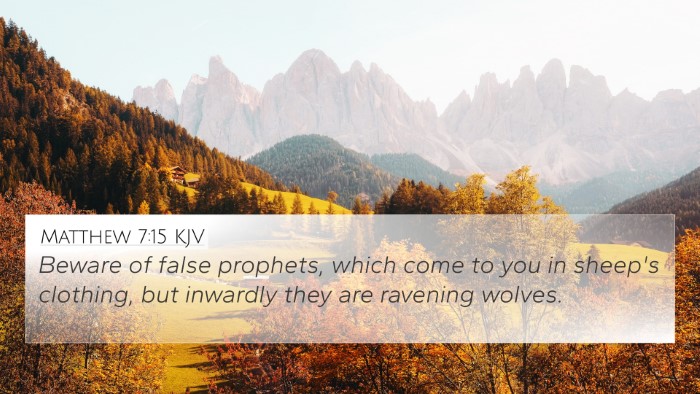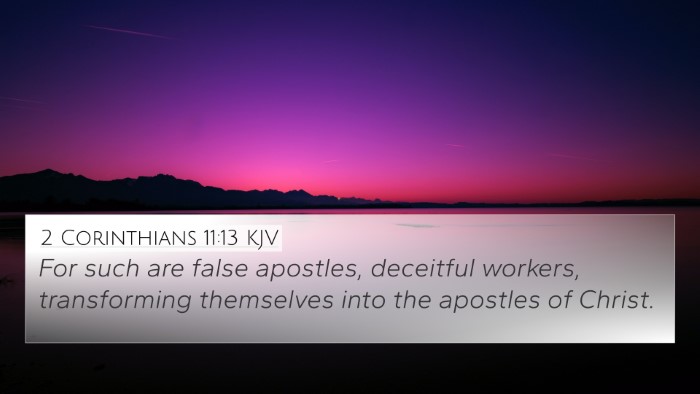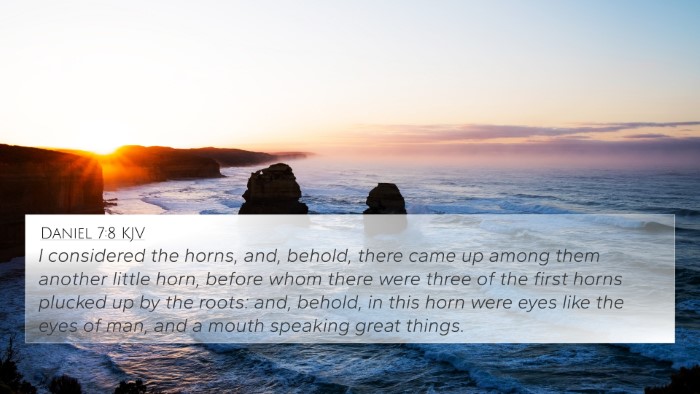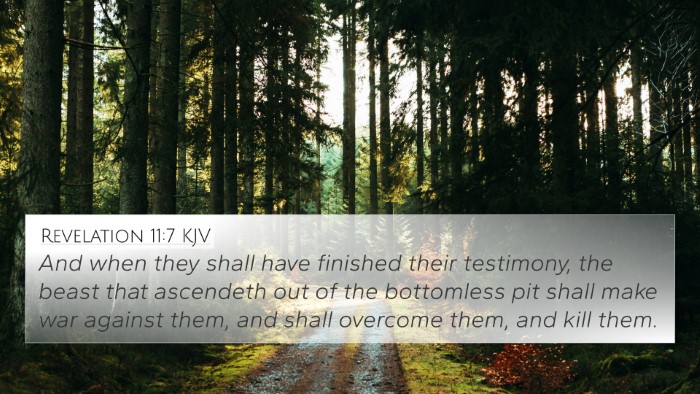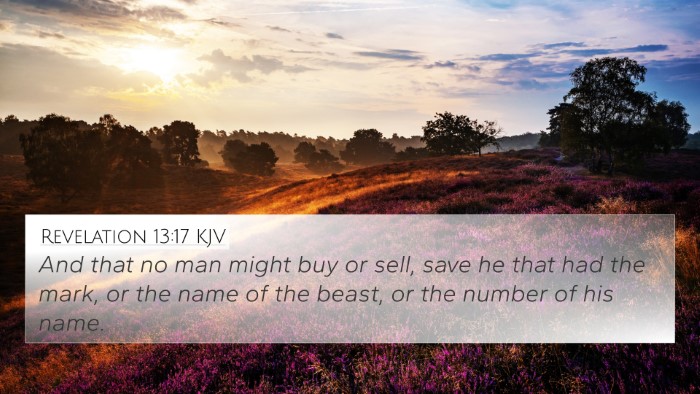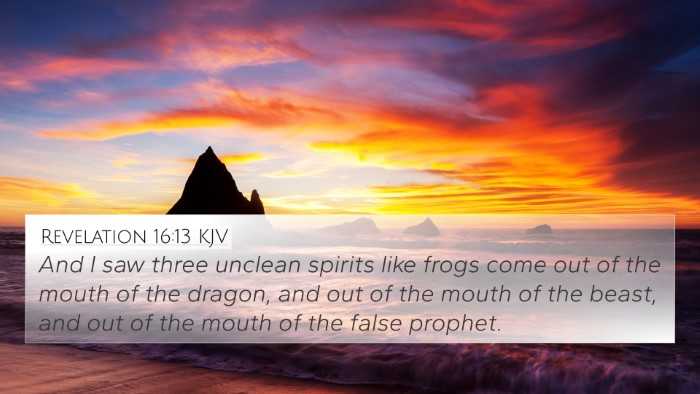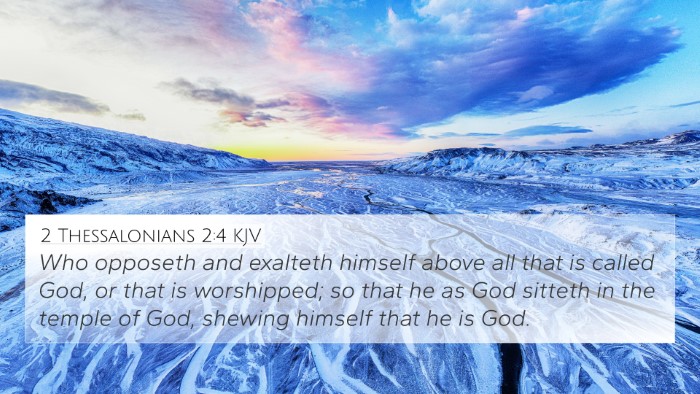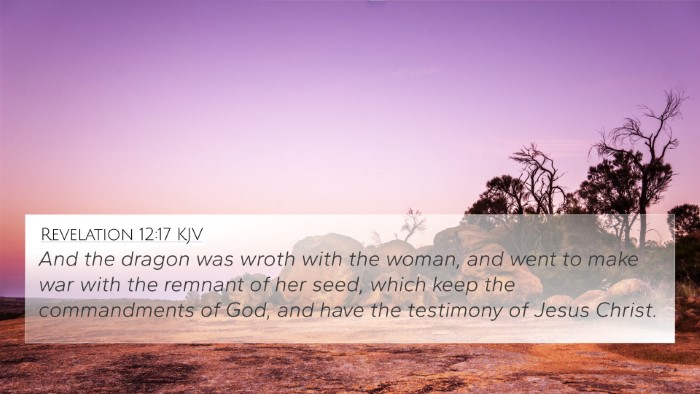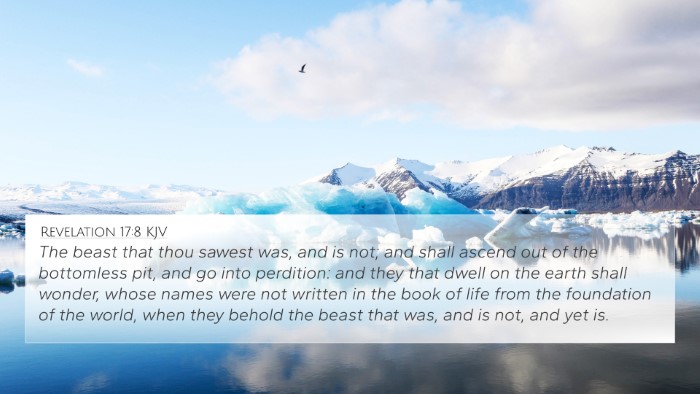Understanding Revelation 13:11
Revelation 13:11 states: "And I beheld another beast coming up out of the earth; and he had two horns like a lamb, and he spake as a dragon." This verse brings profound implications regarding the nature of false prophets and the end times, opening a window into the complex narrative woven throughout the Bible surrounding themes of deception, authority, and spiritual warfare.
Summary of Revelation 13:11
In this passage, we observe the emergence of a second beast that arises from the earth. The description of this beast, possessing horns like a lamb yet speaking as a dragon, depicts a duality representing both gentleness and malevolence. The imagery suggests the deceptive nature of false prophets that appear harmless while harboring destructive intentions. Public domain commentaries offer rich insights to deepen our understanding of this verse:
Commentary Insights
- Matthew Henry: He emphasizes the deceptive characteristics of the beast, stating that the two horns symbolize power that imitates Christ (the Lamb) yet ultimately serves the devil. His commentary highlights that those who follow such beasts may be misled by their outward appearance.
- Albert Barnes: Barnes interprets the horns as symbols of authority or strength, noting that the beast's speech reflects its true nature, similar to Satan, who often masquerades as an angel of light. He elucidates that this beast’s actions will be a significant aspect of the unfolding end-time events.
- Adam Clarke: Clarke points out the earthly origin of the beast, suggesting it may represent religious systems springing from human institutions rather than divine origins, thus accentuating the theme of counterfeit spirituality.
Related Bible Verse Cross-References
To grasp the full implications of Revelation 13:11, one can explore several pertinent cross-references that reveal interconnected themes throughout scripture:
- Matthew 24:24: Warns about false prophets and signs that could deceive even the elect, akin to the deceptive nature of the beast.
- Revelation 19:20: Describes the false prophet who performs miracles to deceive, linking the idea of external appearances versus internal truth.
- 2 Corinthians 11:14: Discusses how Satan masquerades as an angel of light, paralleling the lamb-like appearance of the beast.
- John 10:12: Contrasts the good shepherd with the wolf, a reference to those who come to destroy rather than to protect.
- 1 John 4:1: Instructs believers to test the spirits, emphasizing awareness of deception similar to the nature of the beast.
- Revelation 13:7: Speaks about the authority given to the beast to wage war against the saints, amplifying the message of the beast’s intent.
- Isaiah 14:14: Reflects the ambition and pride of the adversary, who seeks to be like the Most High, resonating with the beast's misleading claim.
Thematic Connections
The theme of deceptive power is recurrent, and through a comparative Bible verse analysis, we find connections that serve to reinforce the warnings presented in Revelation:
- Deuteronomy 13:1-3: Discusses testing prophets and their authenticity, setting a precedent for assessing spiritual leaders.
- Jeremiah 14:14: Addresses false prophets speaking lies in the name of the Lord, linking with the dragon's speech of the beast.
Comprehensive Bible Cross-Reference Materials
Utilizing tools for Bible cross-referencing such as a Bible concordance or a dedicated cross-reference Bible study guide can enhance understanding. These resources facilitate a deeper examination of biblical texts, enabling believers to connect themes across the scriptures effectively. By linking Bible scriptures in such a manner, readers can uncover the cohesive narrative that God has provided through His Word.
Conclusion
To understand Revelation 13:11 is to engage in a broader conversation that spans the entirety of the biblical text. Through thematic Bible verse connections, believers can appreciate the complex dialogue between God’s truth and human deception. The caution against false prophecies and the allure of misleading leadership is a reminder for every generation. How to find cross-references in the Bible will empower the faithful to navigate this rich terrain of scripture with discernment and insight.

